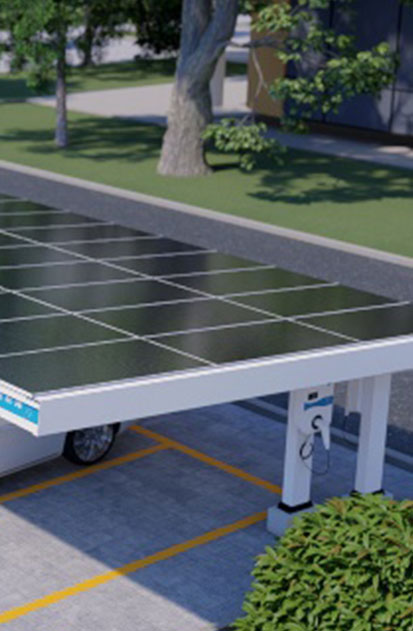不适合租赁安装光伏的屋顶类型
租赁屋顶安装光伏是分布式光伏应用的常见模式,但若屋顶自身条件不符合光伏系统安装要求,不仅会影响发电效率与设备寿命,还可能带来安全隐患。判断屋顶是否适合安装光伏,需从结构安全性、承重能力、光照条件等多维度考量,以下几类屋顶因存在明显缺陷,不适合租赁安装光伏系统。
Renting roofs to install photovoltaics is a common mode of distributed photovoltaic applications, but if the roof's own conditions do not meet the requirements for photovoltaic system installation, it will not only affect power generation efficiency and equipment lifespan, but may also pose safety hazards. To determine whether a roof is suitable for installing photovoltaics, it is necessary to consider multiple dimensions such as structural safety, load-bearing capacity, and lighting conditions. The following types of roofs are not suitable for leasing and installing photovoltaic systems due to obvious defects.
结构安全性不足的屋顶难以承载光伏设备的长期运行。老旧危房的屋顶墙体与承重构件可能存在风化、开裂等问题,光伏支架与组件的重量会加剧结构损耗,甚至引发坍塌风险。屋顶存在明显破损的建筑也不适合安装,光伏组件覆盖后会遮挡破损区域,导致雨水渗漏无法及时修复,进而损坏屋顶结构与光伏设备。此外,临时搭建的彩钢棚,其钢架可能已出现锈蚀,连接节点松动,无法承受光伏系统的附加荷载,强风天气下甚至可能因光伏组件受风面积增大而被掀翻,造成安全事故。
Roofs with insufficient structural safety are difficult to support the long-term operation of photovoltaic equipment. The roof walls and load-bearing components of old and dangerous buildings may have problems such as weathering and cracking. The weight of photovoltaic brackets and components can exacerbate structural wear and even pose a risk of collapse. Buildings with obvious damage to the roof are also not suitable for installation. Covering the damaged area with photovoltaic modules will block it, causing rainwater leakage that cannot be repaired in a timely manner, thereby damaging the roof structure and photovoltaic equipment. In addition, the steel frame of the temporarily built color steel shed may have corroded, the connection nodes may be loose, and it may not be able to withstand the additional load of the photovoltaic system. In strong wind weather, it may even be overturned due to the increased wind area of the photovoltaic modules, causing safety accidents.
承重能力不达标的屋顶无法支撑光伏系统的重量。光伏系统的承重包括组件、支架、逆变器等设备的静态荷载,以及雨雪、风力等动态荷载。农村自建房屋顶若采用预制板结构,单块预制板的承重能力有限,集中安装光伏组件易导致板体断裂;钢结构屋顶若檩条间距过大,或钢材厚度不足,在光伏荷载作用下会产生过度变形,影响组件安装精度与使用寿命。屋顶存在局部承重薄弱区域的建筑,即使整体承重达标,也不适合在薄弱区域安装光伏,否则可能造成局部坍塌。
Roofs with inadequate load-bearing capacity cannot support the weight of the photovoltaic system. The load-bearing capacity of photovoltaic systems includes static loads on components, brackets, inverters, and other equipment, as well as dynamic loads such as rain, snow, and wind. If prefabricated panel structures are used for the roofs of self built houses in rural areas, the load-bearing capacity of a single prefabricated panel is limited, and the centralized installation of photovoltaic modules can easily lead to panel breakage; If the spacing between the purlins of a steel structure roof is too large or the thickness of the steel is insufficient, excessive deformation will occur under the action of photovoltaic loads, which will affect the installation accuracy and service life of the components. Buildings with weak load-bearing areas on the roof, even if the overall load-bearing capacity meets the standard, are not suitable for installing photovoltaics in weak areas, otherwise it may cause local collapse.

光照条件差的屋顶会导致光伏系统发电效率低下,失去投资价值。被周边高大建筑、树木长期遮挡的屋顶,光伏组件会因阴影遮挡产生 “热斑效应”,不仅发电量骤降,还会加速组件老化。朝向不佳的屋顶,太阳辐射接收量少,发电量仅为最佳朝向屋顶的部分比例,投资回报周期大幅延长。此外,空气污染严重或常年多雾的地区,大气透明度低会削弱太阳辐射强度,即使无遮挡,光伏系统的年发电量也会比清洁区域低一定比例,长期运行的经济性较差。
Roofs with poor lighting conditions can lead to low power generation efficiency of photovoltaic systems and loss of investment value. Roofs that have been obscured by surrounding tall buildings and trees for a long time will experience a "hot spot effect" on photovoltaic modules due to shadow obstruction, which not only leads to a sudden drop in power generation, but also accelerates module aging. Roofs with poor orientation receive less solar radiation and generate only a partial proportion of the optimal orientation, resulting in a significantly longer investment return period. In addition, in areas with severe air pollution or frequent fog, low atmospheric transparency can weaken the intensity of solar radiation. Even if there is no obstruction, the annual power generation of photovoltaic systems will be lower by a certain proportion than in clean areas, resulting in poor long-term economic efficiency.
屋顶使用年限与产权存在问题的情况,会带来后期运营风险。剩余使用年限不足的屋顶,光伏系统的投资回报周期通常需要数年,若屋顶在回报期内无法继续使用,会导致投资损失。产权不清晰的屋顶,安装光伏后可能引发法律纠纷,影响系统正常运营。此外,屋顶计划在短期内进行翻新改造的建筑,光伏系统的拆卸与重新安装会产生额外成本,且多次拆装可能损坏设备,因此也不适合租赁安装。
The existence of problems with the service life and property rights of the roof can bring operational risks in the later stage. For roofs with insufficient remaining service life, the investment return cycle of photovoltaic systems usually takes several years. If the roof cannot continue to be used during the return period, it will result in investment losses. Unclear property rights on roofs may lead to legal disputes and affect the normal operation of the system after installing photovoltaics. In addition, for buildings that plan to renovate their roofs in the short term, the dismantling and reinstallation of photovoltaic systems will incur additional costs, and multiple dismantling may damage equipment, making them unsuitable for rental installation.
屋面类型特殊或不利于施工维护的屋顶,会增加安装难度与后期成本。瓦片易破损的屋顶,安装光伏支架时需穿透瓦片固定,可能导致瓦片碎裂,后期渗漏风险高,且更换损坏瓦片时需拆卸组件,维护成本高昂。曲面屋顶因无法铺设平面光伏组件,需定制特殊支架,不仅成本增加,还会因组件与阳光入射角不匹配而降低发电效率。屋顶空间狭小且布局混乱的建筑,光伏组件安装间距不足会影响散热与检修,设备维护时需频繁移动组件,长期下来易造成支架松动。
Roofs with special types or those that are not conducive to construction and maintenance will increase installation difficulty and later costs. Roofs with easily damaged tiles require penetration and fixation of photovoltaic brackets during installation, which may result in tile breakage and high risk of leakage in the later stages. Additionally, replacing damaged tiles requires dismantling components, leading to high maintenance costs. Curved roofs require customized special brackets due to the inability to lay flat photovoltaic modules, which not only increases costs but also reduces power generation efficiency due to the mismatch between modules and sunlight incidence angles. Buildings with narrow roof spaces and chaotic layouts can have insufficient spacing between photovoltaic module installations, which can affect heat dissipation and maintenance. Equipment maintenance requires frequent movement of components, which can lead to bracket loosening over time.
租赁屋顶安装光伏需优先排除上述存在结构安全、承重不足、光照差等问题的屋顶,避免因盲目安装导致安全事故或投资损失。在项目前期,需聘请专业机构对屋顶进行结构检测、承重核算与光照评估,结合屋顶使用年限与产权状况综合判断,确保光伏系统能在安全、高效的条件下长期运行,实现环境效益与经济效益的双赢。
Renting roofs to install photovoltaics should prioritize addressing issues such as structural safety, insufficient load-bearing capacity, and poor lighting, in order to avoid safety accidents or investment losses caused by blind installation. In the early stage of the project, it is necessary to hire a professional organization to conduct structural testing, load-bearing accounting, and lighting evaluation on the roof. Combined with the service life and property rights of the roof, a comprehensive judgment should be made to ensure that the photovoltaic system can operate safely and efficiently for a long time, achieving a win-win situation of environmental and economic benefits.
本文由工商业光伏发电情奉献.更多有关的知识请点击:http://www.zdnygf.com我们将会对您提出的疑问进行详细的解答,欢迎您登录网站留言.
This article is a friendly contribution from distributed photovoltaic power generation For more information, please click: http://www.zdnygf.com We will provide detailed answers to your questions. You are welcome to log in to our website and leave a message
新闻推荐
product recommendation联系方式
Contact Information

 TEL:0531-82390078
TEL:0531-82390078 TEL:18805312017
TEL:18805312017 MAI:sdzdny001@163.com
MAI:sdzdny001@163.com 公司地址: 济南市历下区山大路157号
公司地址: 济南市历下区山大路157号 天合蓝天·山东种电
天合蓝天·山东种电 备案号:鲁ICP备17052940号-2
鲁公网安备37010202700164号
备案号:鲁ICP备17052940号-2
鲁公网安备37010202700164号
 网站地图|XML|TXT
网站地图|XML|TXT

扫一扫方便咨询我们

截屏,微信识别二维码
微信号:18805312017